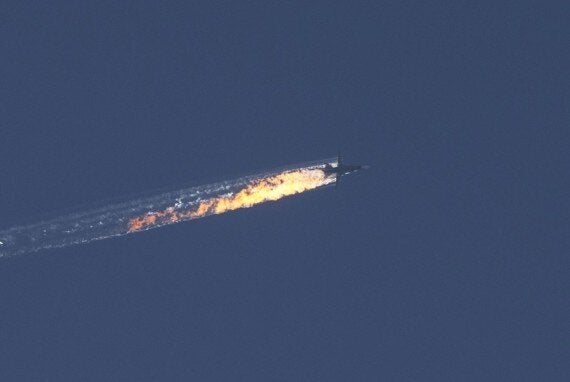Science has boldly entered the squabble over what happened to the Russian military jet that was shot down by Turkey.
Belgian physicists from the University of Leuven used Newton's law to explain why the explanations given by both Russia and Turkey are in fact, wrong.

Before we delve into equations however, here are the facts:
- Last week Turkey shot down a Russian military jet, after it entered Turkey airspace.
- Officials claim they issued around ten warnings to the pilot, which went unheeded.
- They also claim the jet was in Turkish airspace for 17 seconds.
Now for the takedown:
On analysing the video, the physicists estimate that it took the jet 30 seconds to reach the ground, after it was hit. "Because the vertical movement depends solely on the gravity (g = 9.81m / s², z = gt² / 2), we can calculate that the plane was at an altitude of at least 4500m." they wrote in a blog.
"The Turkish Air Force proposes 19 000 feet (or 5800m) first, and that is compatible with our estimate."
Using a map of Turkey, they also worked out the distance the jet fell and if you think back to GCSE physics, the basic equation to work out the speed of the aircraft is to divide the distance by the time.
"Indeed, there are no external forces...the crash site was about 8km from where the plane was hit," they explain.
With the following figures: a horizontal distance of 8km and a time of 30s (the time before the fall) they calculated an estimated speed of 960km / h.
Armed with the jet's speed, both researchers then looked to the distance it travelled in Turkish airspace - 2km.
Going back to the speed, distance and time equation they worked out that the jet spent "7.5s spent in Turkish airspace, and not 17s as the Turkish officials claimed." Oh dear.
SEE ALSO:
To cross the two kilometres from Turkish airspace in 17s the jet would have needed to travel at a slow speed of 420km/h, they said.
We can safely conclude that physics has hit its target again.